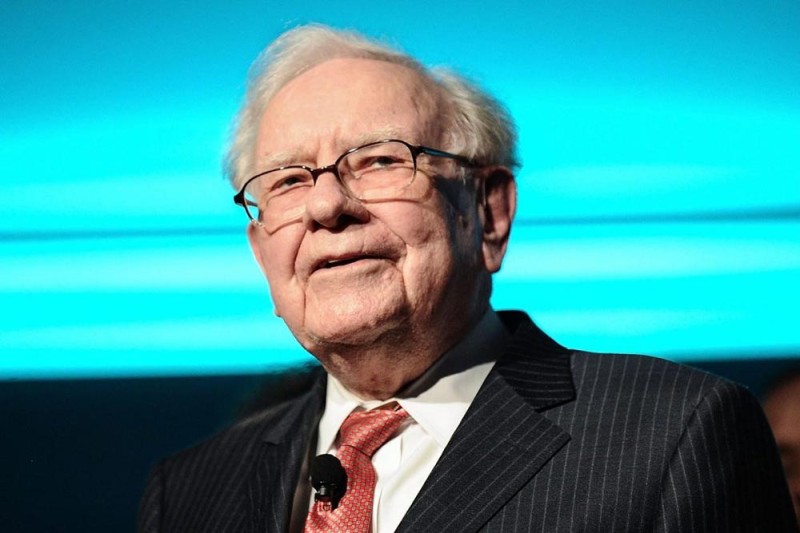
成为亿万富翁最可能的职业路径,是追随沃伦·巴菲特(Warren Buffett)的脚步——全球有15%的亿万富翁,其财富来源于金融与投资行业。
过去几十年里,认为财富能像滚雪球般增值的人激增。今年美国共有902位亿万富翁,而在1990年仅有66位。当时美国的经济规模不到如今的一半,4.1亿美元的实际购买力约等于现在的10亿美元。
根据美国税收公平组织(Americans for Tax Fairness)对《福布斯》数据的分析,美国亿万富翁的总财富约为7.6万亿美元。他们仅占美国人口的0.0003%,却拥有全美总财富的约4.5%。
全球亿万富翁分布:他们是谁,身在何方?
根据《福布斯》统计,在全球3,028位净资产超过10亿美元的富豪中,美国占了近三分之一,位居首位;其次是中国(450位)、印度(205位)、德国(171位)和俄罗斯(140位)。
那些“顺手买辆法拉利就像你临时打车去机场一样轻松”的富豪们,大多集中在少数都市。《福布斯》数据显示,亿万富翁数量最多的城市包括纽约(123位)、莫斯科、中国香港、伦敦和北京。
根据Altrata发布的《亿万富翁普查》,这仍是一个男性主导的圈子:女性仅占全球亿万富翁的13%,不过该比例正在缓慢提升。
亿万富翁的财富从何而来?
想跻身于这个包含比尔·盖茨(Bill Gates)、C罗、赛琳娜·戈麦斯(Selena Gomez)、法国时尚品牌高管与俄罗斯石油大亨的顶级俱乐部?某些路径的成功率显然更高:
成为亿万富翁最常见的方式,是出生在富裕之家或通过婚姻获得财富——约三分之一的亿万富翁主要靠继承获得资产。
而从职业路径来看,最可能成为亿万富翁的行业是金融与投资业——15%的富豪由此发家,堪称“巴菲特路线”。
科技行业造就了13%的亿万富翁,其后依次是:制造业(11%)、时尚与零售(10%)、医疗健康(7%)、食品饮料(7%)、房地产(7%)、多元化工业(7%)、媒体与娱乐(4%)和能源(4%)。
不过,大多数亿万富翁难以将财富全部变现。Altrata报告指出,他们约66%的资产都集中在股票中(通常是其创立的公司),难以轻易抛售。——SK
本文最初发表于Morning Brew。(*)
译者:郝秀
审校:汪皓
成为亿万富翁最可能的职业路径,是追随沃伦·巴菲特(Warren Buffett)的脚步——全球有15%的亿万富翁,其财富来源于金融与投资行业。
过去几十年里,认为财富能像滚雪球般增值的人激增。今年美国共有902位亿万富翁,而在1990年仅有66位。当时美国的经济规模不到如今的一半,4.1亿美元的实际购买力约等于现在的10亿美元。
根据美国税收公平组织(Americans for Tax Fairness)对《福布斯》数据的分析,美国亿万富翁的总财富约为7.6万亿美元。他们仅占美国人口的0.0003%,却拥有全美总财富的约4.5%。
全球亿万富翁分布:他们是谁,身在何方?
根据《福布斯》统计,在全球3,028位净资产超过10亿美元的富豪中,美国占了近三分之一,位居首位;其次是中国(450位)、印度(205位)、德国(171位)和俄罗斯(140位)。
那些“顺手买辆法拉利就像你临时打车去机场一样轻松”的富豪们,大多集中在少数都市。《福布斯》数据显示,亿万富翁数量最多的城市包括纽约(123位)、莫斯科、中国香港、伦敦和北京。
根据Altrata发布的《亿万富翁普查》,这仍是一个男性主导的圈子:女性仅占全球亿万富翁的13%,不过该比例正在缓慢提升。
亿万富翁的财富从何而来?
想跻身于这个包含比尔·盖茨(Bill Gates)、C罗、赛琳娜·戈麦斯(Selena Gomez)、法国时尚品牌高管与俄罗斯石油大亨的顶级俱乐部?某些路径的成功率显然更高:
成为亿万富翁最常见的方式,是出生在富裕之家或通过婚姻获得财富——约三分之一的亿万富翁主要靠继承获得资产。
而从职业路径来看,最可能成为亿万富翁的行业是金融与投资业——15%的富豪由此发家,堪称“巴菲特路线”。
科技行业造就了13%的亿万富翁,其后依次是:制造业(11%)、时尚与零售(10%)、医疗健康(7%)、食品饮料(7%)、房地产(7%)、多元化工业(7%)、媒体与娱乐(4%)和能源(4%)。
不过,大多数亿万富翁难以将财富全部变现。Altrata报告指出,他们约66%的资产都集中在股票中(通常是其创立的公司),难以轻易抛售。——SK
本文最初发表于Morning Brew。(*)
译者:郝秀
审校:汪皓
The likeliest professional path to billionaire status is to follow in Warren Buffett’s footsteps, as 15% of billionaires derive their net worth from the finance and investment industry.
The number of people who may think a banana costs $10 has exploded in the last few decades. The US has 902 billionaires this year, up from 66 in 1990, when the economy was less than half of its current size and $410 million was equivalent to $1 billion in today’s dollars.
US billionaires are collectively worth about $7.6 trillion, according to Forbes data analyzed by Americans for Tax Fairness. That accounts for ~4.5% of all wealth held by Americans, while making up just .0003% of the population.
Who (and where) are they?
The US leads the pack, home to almost one-third of the world’s 3,028 people with a $1+ billion net worth, followed by China (450), India (205), Germany (171), and Russia (140), per Forbes.
The folks for whom a Ferrari impulse buy is roughly the financial equivalent of your last-minute decision to Uber to the airport tend to cluster in cities. Forbes found that the leading billionaire hubs are New York City (home to 123 billionaires), Moscow, Hong Kong, London, and Beijing.
It’s a boys club, with women accounting for just 13% of the world’s billionaires, according to the Altrata Billionaire Census—though that number is growing.
Tracing the Benjamins
Some routes are more likely than others to land you in the exclusive club that includes Bill Gates, Ronaldo, Selena Gomez, French fashion executives, and Russian oil tycoons:
The most common way to achieve billionairehood is to be born into a wealthy family or by marrying into wealth, with a third of billionaires having inherited much of their net worth.
The likeliest professional path to billionaire status is to follow in Warren Buffett’s footsteps, as 15% of billionaires derive their net worth from the finance and investment industry.
Tech minted 13% of billionaires, followed by manufacturing (11%), fashion and retail (10%), healthcare (7%), food and beverage (7%), real estate (7%), diversified industries (7%), media and entertainment (4%), and energy (4%).
Most can’t fully cash out: Billionaires typically aren’t able to build a castle out of hundred-dollar-bill stacks, since 66% of their net worth is tied up in stocks (often in a company they started), which they can’t sell easily, according to Altrata.—SK

